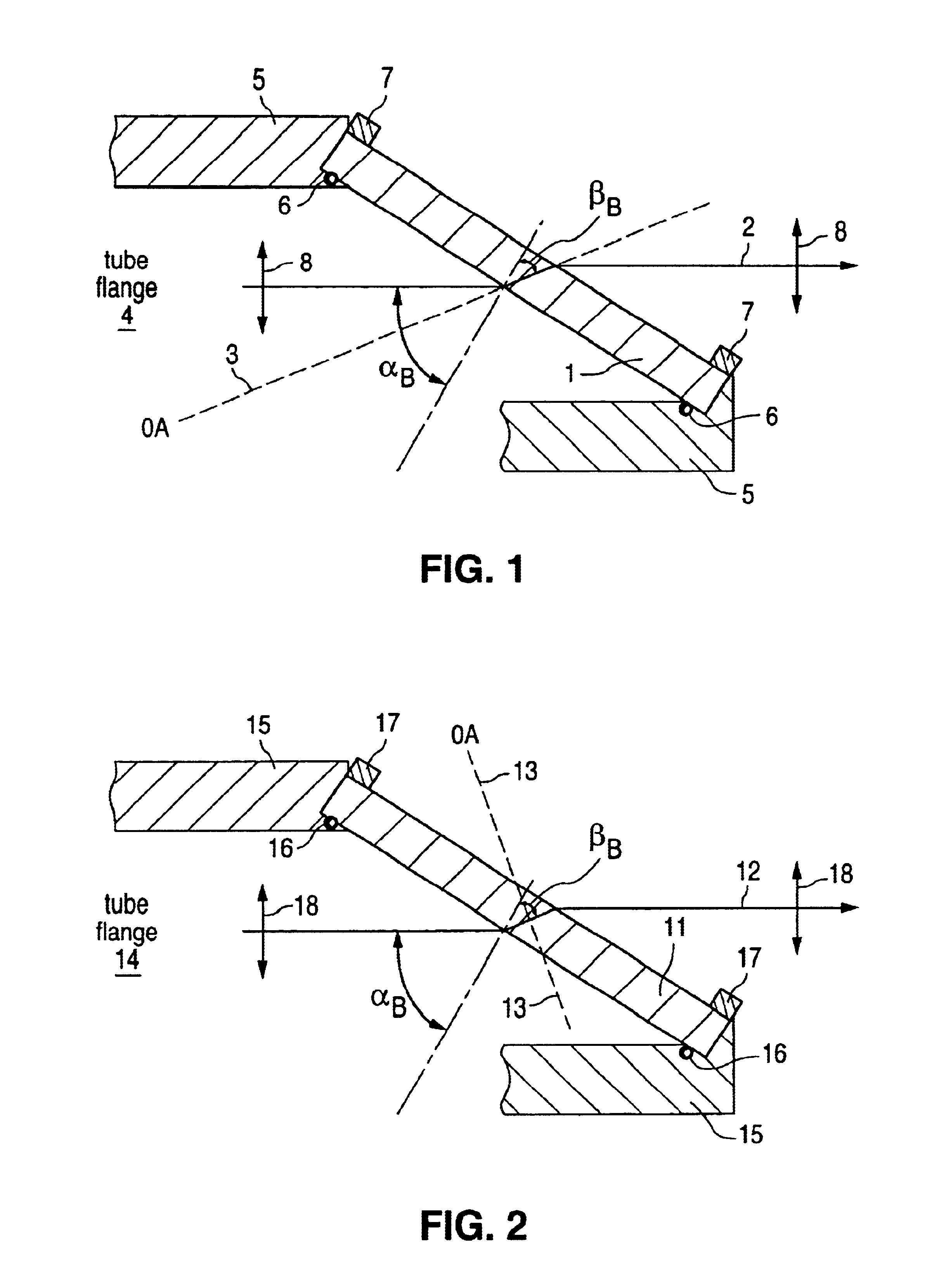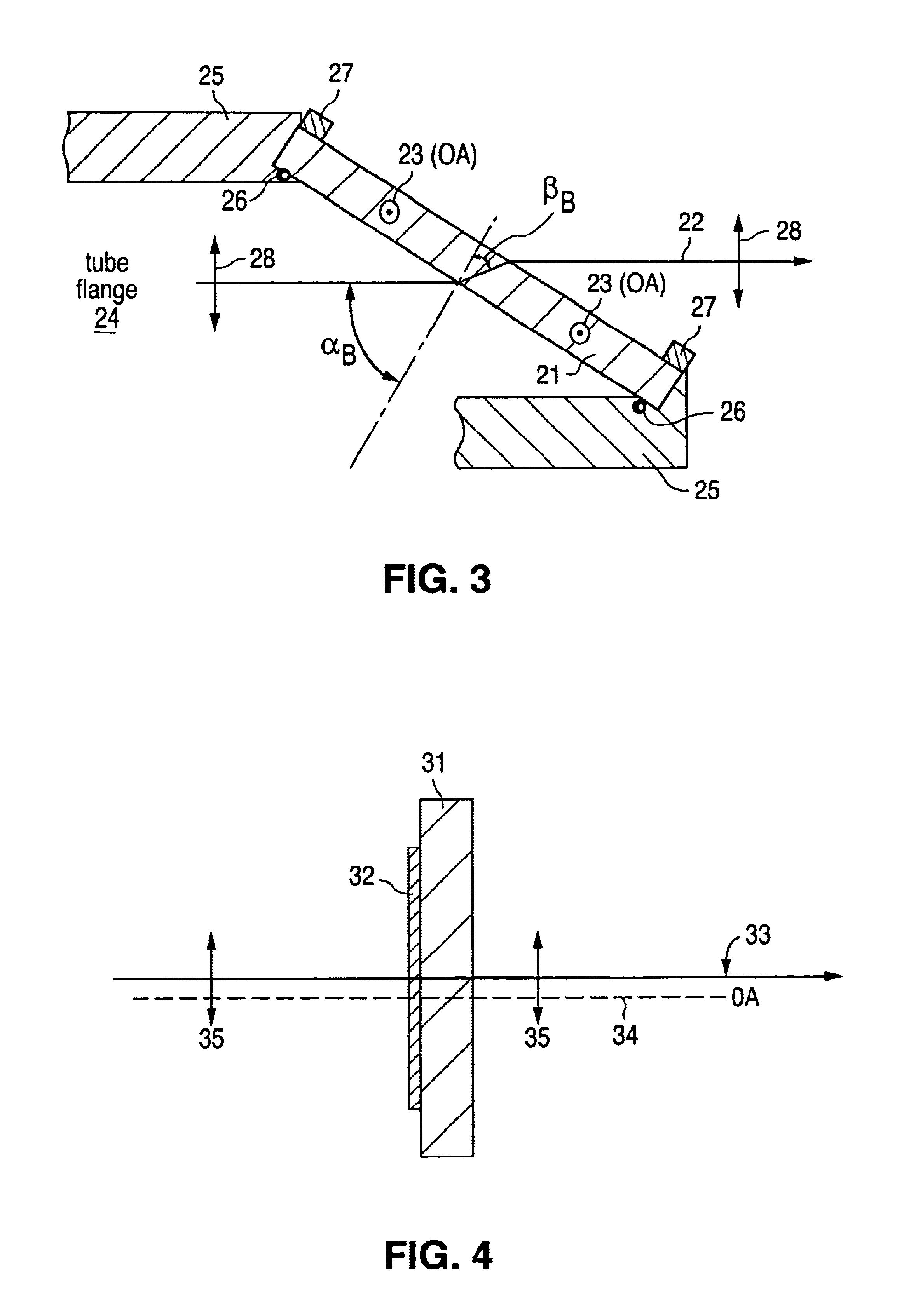Resonator optics for high power UV lasers
a laser and uv technology, applied in the direction of laser details, optical resonator shape and construction, excitation process/apparatus, etc., can solve the problems of achromatic imaging optics for this wavelength region that are difficult to produce, windows are unable to withstand, windows then crack, etc., and achieve polarization that is not substantially reduced and actually increased.
- Summary
- Abstract
- Description
- Claims
- Application Information
AI Technical Summary
Benefits of technology
Problems solved by technology
Method used
Image
Examples
Embodiment Construction
-list-item">Kakehata, M., et al., “CTUH 15 Experimental Study of Tunability of a Discharge Pumped Molecular Fluorine Laser,” CLEO 90 / Tuesday Poster, pp. 106-108;[0030]T. Hofmann, J. M. Hueber, P. Das, S. Scholler, “Revisiting The F2 Laser For DUV microlithography”, 24th International Symposium on Microlithography, Mar. 14-19, 1999, Santa Clara, Calif., USA;[0031]W. Muckenheim, B. Ruckle, “Excimer Laser with Narrow Linewidth and Large Internal Beam Divergence”, J. Phys. E: Sci. Instrum. 20 (1987) 1394;[0032]Okada, et al., “Electronic Tuning of Dye Lasers by an Electrooptic Birefringent Fabry-Perot Etalon,” Optics Communications, Vol. 14, No. 1 (May 1975);[0033]Arnold Bloom, “Modes of a Laser Resonator Containing Tilted Birefringent Plates,” JOSA, Vol. 64, No. 4 (April 1974);[0034]G. Grunefeld, H. Schluter, P. Andersen, E. W. Rothe, “Operation of KrF and ArF Tunable Excimer Lasers Without Cassegrain Optics”, Applied Physics B 62 (1996) 241; and[0035]W. Mueckenheim, “Seven Ways to Comb...
PUM
 Login to View More
Login to View More Abstract
Description
Claims
Application Information
 Login to View More
Login to View More - R&D
- Intellectual Property
- Life Sciences
- Materials
- Tech Scout
- Unparalleled Data Quality
- Higher Quality Content
- 60% Fewer Hallucinations
Browse by: Latest US Patents, China's latest patents, Technical Efficacy Thesaurus, Application Domain, Technology Topic, Popular Technical Reports.
© 2025 PatSnap. All rights reserved.Legal|Privacy policy|Modern Slavery Act Transparency Statement|Sitemap|About US| Contact US: help@patsnap.com



